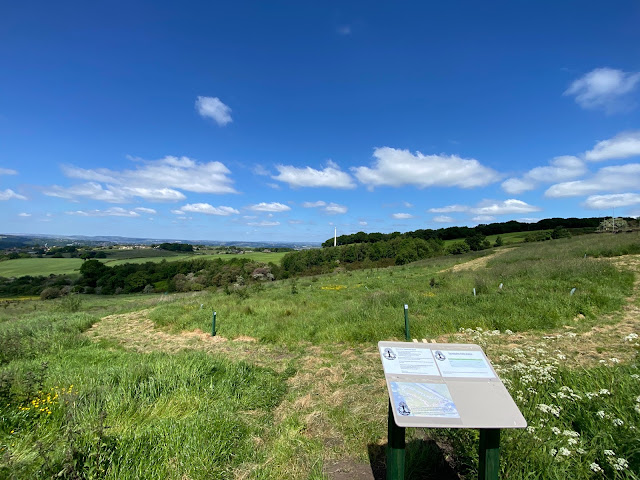Tagging and tracking.
As a data geek and lover of google maps, the possibility of tracking all of the tree planting in a database and showing each numbered tree on a map, was too much of a temptation to ignore.
I had tried to encourage The Heart of England Forest to do this on a larger scale when I worked for them. Not individual trees, but a record of what they planted and where - so it could be visible on their website with a maintenance history and extra planting information. They did for a while and then after I left, it fell into disrepair.
For me though, tracking the planting was a must. As I have written in previous blogs, the pleasure of having kids plant trees and know for certain, which individual trees they planted and where, is too huge to pass up. I like to imagine that some of the children at least, will return in years to come and see how their efforts have been rewarded and witness the start of something, something that will continue long beyond their own lifetimes. That can't happen without a little careful record keeping.
I guess there are many ways to solve this problem.
My solution was one of these :
A Dymo label printer - but an industrial strength one that prints on metal. A charity I am involved with put the idea into my head. They said that you could print on old coke cans with a Dymo printer. This turned out to be only partially true - you could, in theory, with the right kind of Dymo printer, but it wouldn't have very good results.
The right kind of printer it seems is a Rhino. And they are tricky to buy. Amazon sell them for £300! Ouch! I managed to find one on Ebay in the USA for considerably less (though still a significant sum) and had it imported to the UK - so I had to wait patiently.
They do seem pretty robust bits of kit though, and they weigh a ton (I understand now why it cost a lot to ship - I think it is made of cast iron). They come with aluminium or stainless steel tape. I experimented and worked out that I could print 3 numbers on quite a small tag with room for a punched hole - the Dymo has a hole punch function which is handy as the metal is surprisingly tough to work with after printing.
My good friend Caroline suggested something I should have thought of myself (being a tight yorkshire man, a keen re-cycler and a cyclist) - repurposing old bike inner tubes. This was a stroke of genius. My bike shop of choice (Sowerby Brothers in Mirfield - the best bike shop I have ever used - you should go, they are great) agreed to save me some old mountain bike inner tubes. I popped in last weekend and picked them up (thanks Dave).
They are perfect for the job, they cut up easily with scissors, have plenty of stretch for getting them over the tree and will stretch with time as the tree grows.







What a fantastic idea! I may have to copy it!
ReplyDeleteAdded to my shopping list for tomorrow - stop by the bike shop and pick up a punctured inner tube!
Glad it is of use, I pinched it and happy for it to be re-pinched :-)
Delete